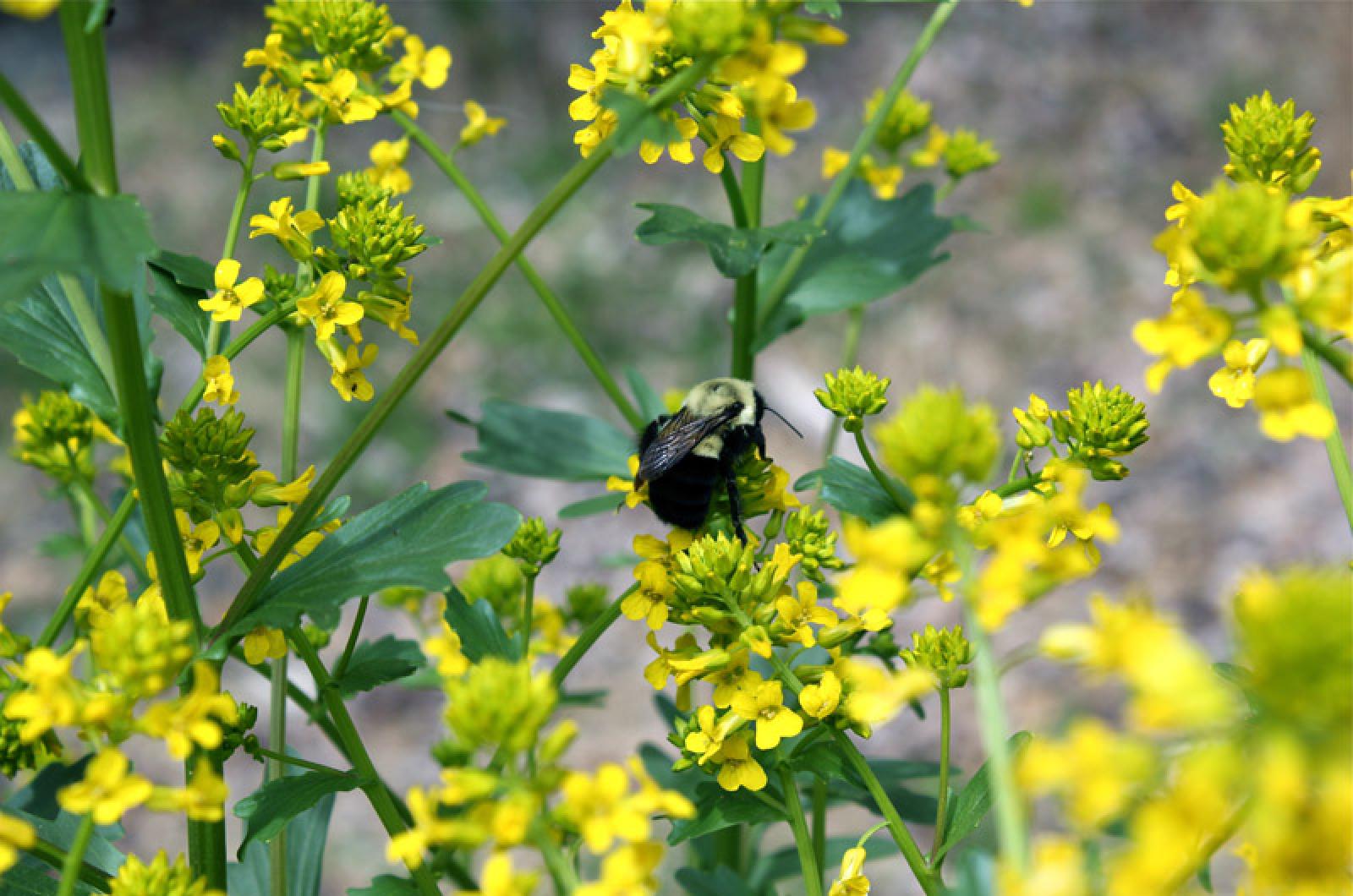What goes around comes around.
Consider Saint Barbara. She is the patron saint of firework makers, artillerymen, founders, stonemasons, miners and gravediggers and was also known as a protector against lightning, fire and sudden death. Her father locked her in a tower after she converted to Christianity and eventually had her killed by his henchmen for her heresy.
Karma, though, can be the ultimate equalizer. After Barbara’s murder, lightning struck her father, killing him instantly.
She has not simply become a relic of history though. Barbara lives as a saint and as a genus of plants.
Her namesake, Barberea, is a genus of 22 plants that reside in the mustard family, Brassicaceae. Locally, this genus is represented by the understated wintercress. You can see wintercress, known also as yellow rocket, rocket cress and wound rocket, flowering now. Its small, four-petalled bright yellow flowers started blooming last month and will continue into summer.
This plant was named for Saint Barbara for two reasons. One is that it is reported to soothe and heal wounds. The other reason has to do with its ability to stay green almost year-round. Saint Barbara’s Day is celebrated in December, and if the winter has been mild, it is possible to find winter cress still with green leaves, sometimes even under the snow!
Before one could just pick up a bottle of vitamins, greens of these sorts were eaten and valued, as they were rich in vitamin C and A. So, it is not surprising that wintercress was consumed as a preventative for scurvy. As is often the case concerning wild foods, some studies identify a potential for harm to the kidneys. However, I prefer to take my chances with these wild greens.
Finding wintercress is fantastic for reasons beyond its reputed medicinal value. Most of the plant is edible. The leaves are best in winter and early spring before the stem emerges. They can be used raw in salads or cooked like spinach. If you are thinking of harvesting some now, note that you are too late. Once the flowers emerge (and they are present now) the leaves have become too bitter.
You can try the flowers, too. They are best before the bloom, resembling and tasting like mini broccoli heads. Cook them as you would broccoli or just throw them in a sauté with butter and garlic.
Italian immigrants were known to forage wintercress, and this plant has been referred to as “some weed the Italians eat.” That bodes well for me, as I will summon the memory of my immigrant grandparents and try them.
These greens are definitely considered weeds and are easy to find. Common in moist places, along roads and in fields and waste places, wintercress, though native to Eurasia, has easily found a home here and become naturalized in our habitats.
Make a point of looking for this flowering biennial now and remember its location. Once the flowers and stem have gone, they will remain an excellent source for an edible, local herb throughout the winter, giving us something to look forward to even after summer fades.
Suzan Bellincampi is director of the Felix Neck Wildlife Sanctuary in Edgartown, and author of Martha’s Vineyard: A Field Guide to Island Nature.




Comments
Comment policy »